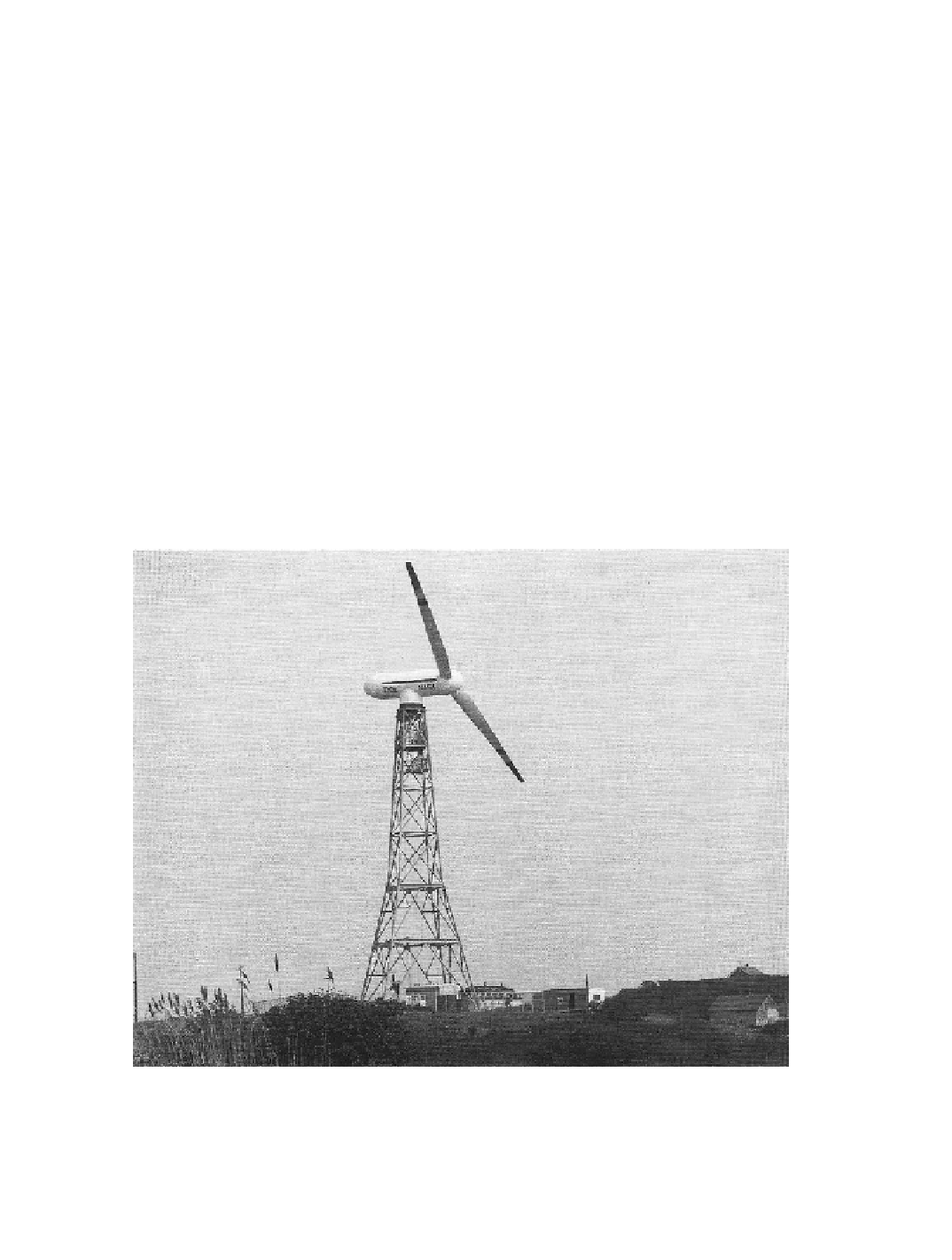Environmental Engineering Reference
In-Depth Information
NASA/DOE Mod-0A Experimental HAWTs
During the 1970's, progress continued on several developmental cycles of medium- and
large-scale machines. Soon after the initial testing of the 38.1-m diameter Mod-0 HAWT
test bed, the U.S. Department of Energy decided to install a pair of upgraded replicas (later
increased to four through Congressional actions) into actual utility operation. These
machines were designated the
Mod-0A
wind turbines (Fig. 3-29), and each had a rated
power of 200 kW, twice that of the Mod-0. While their power was still quite small
as viewed by a utility, these would be the largest wind turbines integrated into a utility since
the Smith-Putnam turbine of 1939. In fact, at the time there was almost no experience in
the U.S. in operating a wind turbine of any size in an electric utility environment.
The purpose of the Mod-0A program was to identify and resolve technical and
operational
utility interconnection issues
. These included questions of power quality,
transient effects, safety, re-closure, and startup/synchronization/shutdown procedures. In
addition, the Mod-0A HAWTs would form a visible validation of such operations. Through
a competition aimed at the utility industry, 17 sites (later expanded to 35) were selected and
instrumented with anemometer towers for detailed site wind assessments. This became the
base from which the locations of the Mod-0As (and later NASA/DOE machines) were
selected in follow-on competitions. The four Mod-0A HAWTs were installed from 1977
to 1979 at Clayton, New Mexico; Block Island, Rhode Island; Culebra Island, Puerto Rico;
and near Kahuku on the northern tip of the island of Oahu, Hawaii. Mod-0A sites were
selected at relatively small utilities or isolated locations, so that some understanding of the
problems of
signiicant penetration
of wind power into a grid could be investigated. Some
Figure 3-29. The 200-kW 38.1-m diameter Mod-0A wind turbine on Block Island,
Rhode Island.
It was one of four turbines of the same design installed on small grids in
the U.S. to identify and resolve utility interconnection and operation issues.
(
Courtesy of NASA Lewis Research Center
)

Search WWH ::

Custom Search